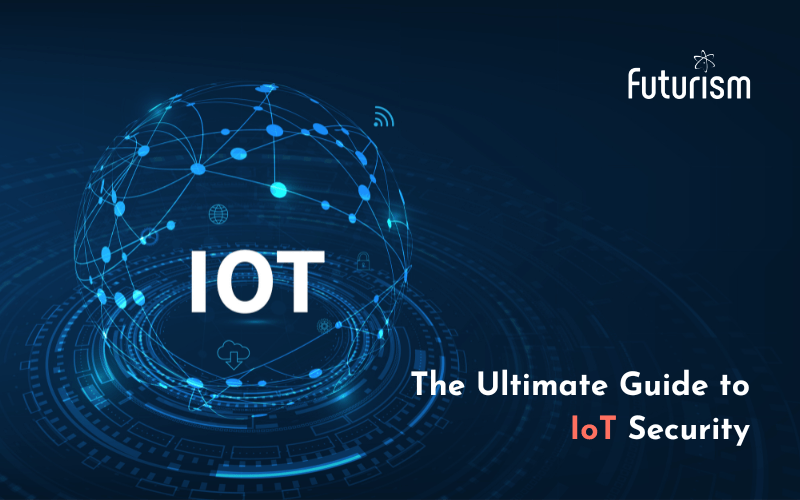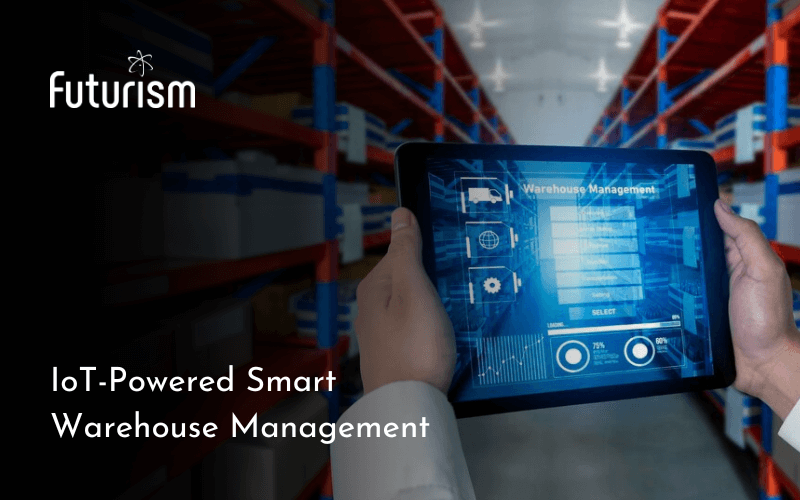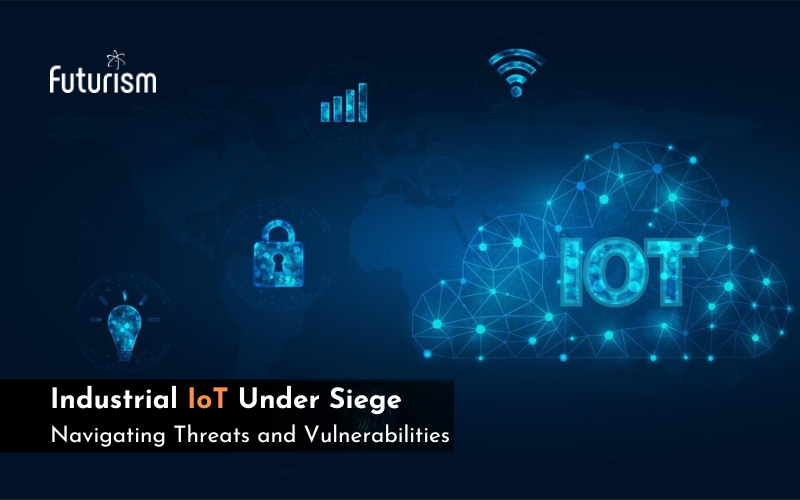The Role of Smart Maritime IoT Solutions in Enhancing Maritime Safety

Futurism Technologies
April 18, 2024 - 3.2K
5 Min Read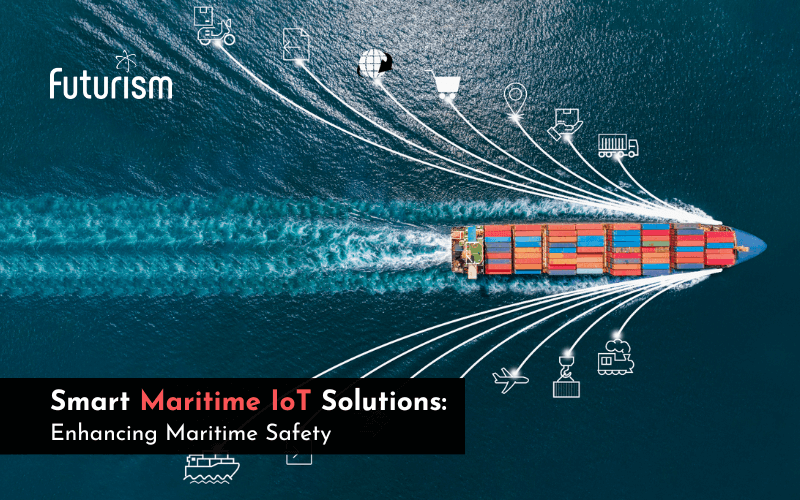
In the intricate web of global trade, the maritime industry stands as a pivotal element, facilitating the transport of goods across continents with remarkable efficiency. However, the vastness of this sector’s operations brings forth significant safety challenges, both onboard the ships and within the intricate operations of port logistics. Enter the realm of maritime IoT solutions, a technological revolution poised to redefine maritime safety standards, offering innovative solutions to age-old challenges.
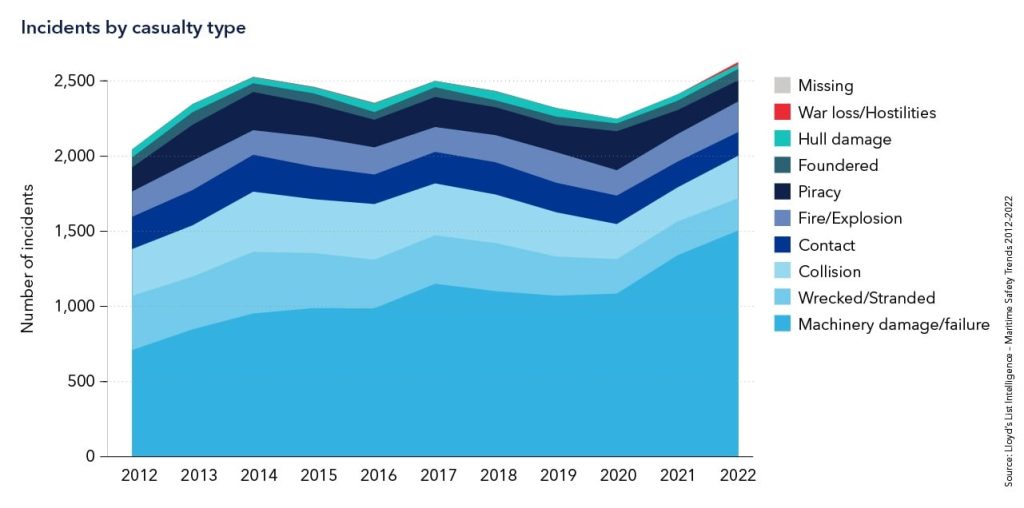
The Growing Role of IoT in Maritime Safety
Maritime IoT solutions, are about connectivity and intelligence. By integrating sensors, devices, and systems into a cohesive network, smart maritime solutions provide a real-time overview of operations, predictive insights, and automated controls. In the maritime domain, this means enhanced monitoring capabilities, improved preventive maintenance, and heightened safety protocols, all contributing to safer maritime journeys and operations.
- Advanced Predictive Analytics: Leveraging smart maritime solutions powered by AI and IoT, vessel engineers can predict equipment failures and maintenance needs before they lead to operational hazards. This predictive capability is key to preventing accidents and ensuring the smooth operation of critical machinery onboard.
- Environmental Monitoring: Maritime IoT solutions continuously monitor maritime environments for changes that could affect vessel safety, such as unexpected weather conditions, high waves, or obstacles in the water. This real-time data allows for immediate adjustments to routes or operations to maintain safety.
- Integrated Communication Systems: IoT for shipping industry enhances communication between ship and shore, ensuring that vessels are never out of reach. This seamless communication is crucial for emergency response, navigational assistance, and operational support, keeping crew members safe in all conditions.
- Automated Response Mechanisms: In critical situations, smart maritime solutions can initiate automated responses, such as shutting down engines, sealing off sections of a ship, or deploying safety equipment. These rapid responses can be pivotal in preventing minor incidents from escalating into major emergencies.
- Enhanced Training and Simulation: IoT in maritime logistics enable the development of sophisticated training programs and simulations for crew members, using real-world data to prepare them for emergency situations. This hands-on experience is invaluable for ensuring that the crew can respond effectively to any scenario.
- Compliance Monitoring: Maritime IoT solutions help vessels comply with international safety and environmental regulations by monitoring emissions, waste management, and other compliance metrics in real-time. This not only ensures legal compliance but also promotes a culture of safety and responsibility onboard and within the maritime industry.
- Customizable Safety Solutions: Recognizing the unique needs of different vessels and operations, smart maritime solutions allow for the customization of safety protocols and monitoring systems. This flexibility ensures that each vessel can be equipped with the most effective and relevant safety technologies.
Read also: AI and IoT – Dynamic Duo Reshaping the Digital World
Collision Avoidance Systems
At the forefront of maritime IoT solutions are collision avoidance systems. These smart maritime solutions leverage a mix of radar data, sensor inputs, and Automatic Identification Systems (AIS) to create a dynamic, real-time map of a vessel’s surroundings. By processing this data through sophisticated algorithms, ships can predict potential collisions long before they pose a risk, allowing for preemptive action to be taken. This technological foresight is instrumental in navigating the crowded sea lanes of today’s global shipping routes.
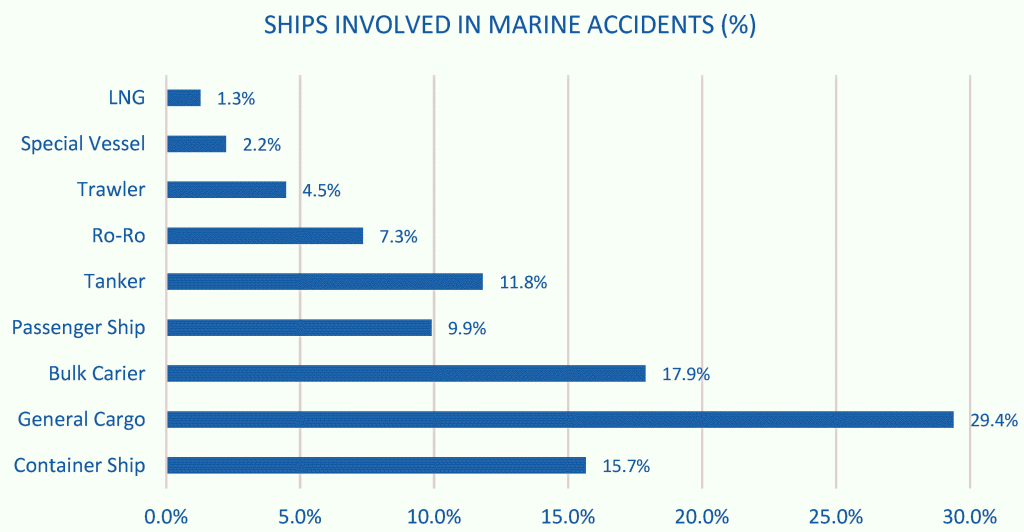
- Integration with Navigation Systems: Modern collision avoidance systems are fully integrated with a vessel’s navigation systems, including GPS and Electronic Chart Display and Information Systems (ECDIS). Such a powerful remote vessel monitoring solution ensures that navigational decisions are informed by the most current and comprehensive situational data, enhancing route planning and avoidance maneuvers.
- Machine Learning Enhancements: Utilizing machine learning algorithms, collision avoidance systems can now learn from past incidents and near-misses, improving their predictive capabilities over time. This continuous learning process helps in refining the system’s accuracy, making it more adept at foreseeing and avoiding potential threats.
- Collaborative Avoidance Protocols: These systems can communicate potential risks and recommended avoidance actions to nearby vessels equipped with compatible systems. This collaborative approach enhances situational awareness for all ships in the vicinity, contributing to a collective improvement in maritime safety.
- Autonomous Vessel Navigation: As the maritime industry moves towards the future of autonomous ships, collision avoidance systems play a pivotal role. They provide the essential capability for unmanned vessels to navigate safely among manned ships, ensuring that these technological advancements do not compromise maritime safety.
- Real-time Traffic Management: In congested ports and busy sea lanes, collision avoidance systems contribute to efficient traffic management by providing real-time data to port authorities and shipping companies. This facilitates the smooth coordination of vessel movements, reducing the risk of accidents in high-traffic areas.
- Enhanced Alert Systems: Beyond identifying potential collisions, these smart maritime IoT solutions also prioritize threats and provide tiered alerts to the crew, ranging from early warnings to urgent collision alerts. This tiered approach ensures that the crew can respond appropriately based on the immediacy and severity of the threat.
- User-friendly Interfaces: Advances in user interface design have made collision avoidance systems more accessible and easier to use for mariners. Intuitive displays and interactive features ensure that crucial information is readily understandable, enabling swift decision-making in critical situations.
Read also: How IoT is Driving Modern and Smart Supply Chains for eCommerce Businesses
Automated Health Monitoring for Crew
The health and safety of the crew are paramount for any maritime operation. Maritime IoT solutions extend their protective reach to the individuals aboard, through wearable devices that monitor vital signs and environmental sensors that keep tabs on air quality and potential hazards. These smart maritime solutions ensure that any deviation from the norm, be it a health anomaly in a crew member or a shift in environmental conditions, triggers an immediate response, safeguarding the well-being of all on board.
Environmental Hazard Detection
The maritime environment presents a unique set of hazards, from flammable gases to the risk of onboard fires and water ingress. Maritime IoT solutions are tailored to detect these dangers in their nascent stages. Networks of sensors, strategically placed throughout the vessel, continuously monitor for signs of environmental hazards. Upon detection, these smart maritime solutions can initiate alarms, and in some cases, activate automated countermeasures, mitigating risks and preventing potential disasters.
Takeaway
The potential of maritime IoT solutions to transform maritime safety is immense. With each collision avoided, hazard detected, and health issue promptly addressed, the reason for adopting smart maritime solutions becomes ever more compelling. As we sail into the future, the adoption of maritime IoT solutions stands as a source of progress, guiding the maritime industry towards safer, more secure horizons. Investing in IoT for shipping industry is not just an investment in new technology; it’s a commitment to safeguarding lives, maritime assets, and the environment.
The journey towards unprecedented maritime safety begins with a single step. Discover how Futurism Technologies’ IoT Remote Vessel Monitoring solution can transform your maritime operations, ensuring safety, efficiency, and compliance. From advanced collision avoidance systems to comprehensive environmental monitoring, our maritime IoT solutions are designed to meet the unique challenges of the maritime industry.
Don’t let safety concerns navigate your future. Take control with cutting-edge maritime IoT solutions that safeguard your crew, vessels, and cargo. To learn more about our smart maritime solutions, get in touch with our IoT expert today.
Subscribe Now!
TRENDING POSTS
-
Futurism Returns to Hannover Messe 2024: Leading the Charge in Industrial and Digital Transformation
-
The Role of Smart Maritime IoT Solutions in Enhancing Maritime Safety
-
Data Integration Unlocked: From Silos to Strategy for Competitive Success
-
Navigating the Shadows: Understanding Zero-Click Attacks in the Digital Age
-
AI Reimagined: Crafting Next-Gen AI Apps with Expert Fine-Tuning
-
Explore Next-Gen Digital Solutions with Futurism at MWC 2024
-
Futurism Unleashes the Technology of Tomorrow at MWC Barcelona 2024
-
Futurism AI: Turning Ideas into Apps at Lightning-Fast Speed
-
Accelerate AI Across Your Enterprise With Futurism AI
-
Futurism to Address the Biggest Security Challenges at RSS 2022
-
Futurism at SelectUSA 2022: Steering the Next Wave of Businesses
-
Futurism to Uplift the MSP Business Community at the MSP Expo 2022
-
Futurism Sets Out to Address the Biggest Security Challenges at the RSA Conference 2022
-
5 Ways to Prepare Your Business for Digital Transformation
-
4 Ways To Win at Digital Transformation on a Shoestring Budget
-
Futurism: Empowering MSPs at the Channel Partners Conference & Expo 2022
-
Why AI in Digital Marketing is the Next Big Thing?
-
Futurism brings ‘Mobile First Digital Transformation’ to the fore at MWC Barcelona 2022
-
Cybersecurity for Rural Hospitals: How can Rural Hospitals become Cyber Smart?
-
Futurism Empowers Rural Health Care Community at the AHA Rural Health Care Leadership Conference
-
The Biggest Problem With Cybersecurity In Healthcare Sector, And How IBM QRadar Can Fix It?
-
How IBM MaaS360 is Revolutionizing Endpoint Security in the Healthcare Industry?
-
Futurism to Present its MSP Partner Program at the Channel Partners Conference & Expo 2021
-
EndPoint Security in Healthcare Matters and IBM MaaS360 Can Help
-
How AI Will Enable Faster Adaptation of Digital Transformation
-
How Is Digital Modernization Important In Supplier On-Boarding?
-
Top 10 Email Marketing Tips for This Holiday Season
-
Benefits of using ERP Software for Energy and Gas Industries
